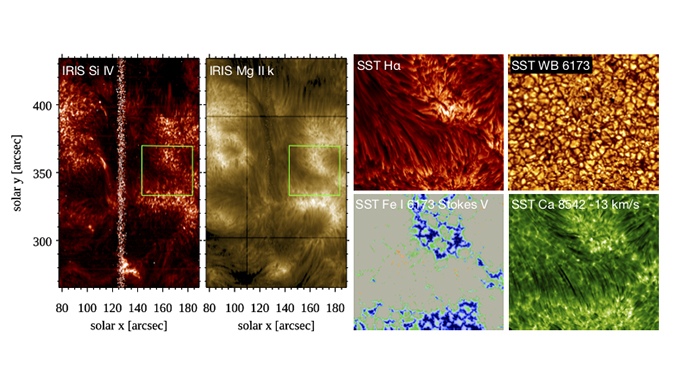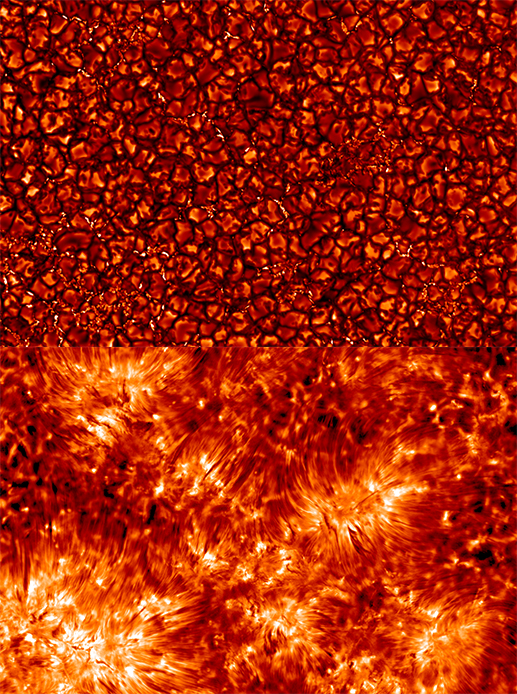The observing time is usually spread over three 2-week campaigns from Spring until Autumn. These campaigns are very much a team effort and quite a few members from the RoCS team participate in these observations. All observations are in coordination with the IRIS satellite which involves daily interaction with the IRIS planners to decide what target to observe and which observing program to run.The Sun has been in the quiet phase of its 11-year magnetic activity cycle the past years, and most of the observed targets were in quiet regions. Now that the activity level is picking up again, we will more and more focus on active region observations.
The observations with IRIS from space gives us access to the higher parts of the solar atmosphere: the upper chromosphere and transition region. With the SST we can observe the deeper parts of the atmosphere, the photosphere and lower chromosphere, at extreme detail.
Besides planning and acquisition of new observations, the reduction and data processing of current and earlier observations is one of the other main activities of the observations group. We employ image restoration techniques to mitigate the effect of atmospheric turbulence (so-called “seeing”) on the data quality. Like all modern telescopes, the SST employs an adaptive optics system to correct for seeing in real time during the observations. Adaptive optics provides a significant improvement of the data quality but post-facto image restoration is mandatory to attenuate residual seeing deformations. With image restoration, high data quality can be achieved over larger field of view and over longer periods of time. Besides considerable computing power and data storage capacity, data reduction requires a fair amount of manpower and is handled as a team effort. We collaborate with the SST staff in Stockholm and La Palma to improve, optimise and further develop the data processing pipelines for the CRISP and CHROMIS instruments.


